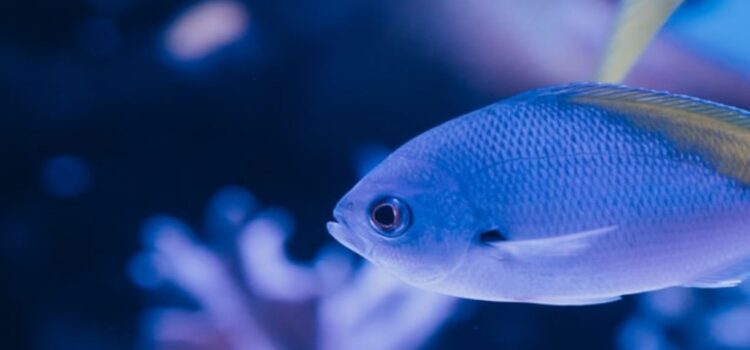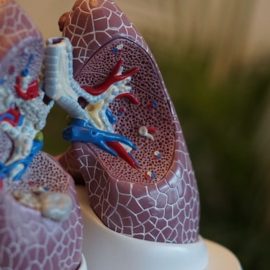

This article is an excerpt from the Shortform book guide to "I Contain Multitudes" by Ed Yong. Shortform has the world's best summaries and analyses of books you should be reading.
Like this article? Sign up for a free trial here.
What do the sea microorganisms in the ocean do? What role do they play in the lives of marine animals?
According to science journalist Ed Yong, sea microorganisms play a crucial role in the livelihood of marine animals, granting them protection from predators and even influencing how they develop. In his book I Contain Multitudes, Yong explains in detail the relationship between sea microorganisms and marine life.
Read on to learn how sea microorganisms influence marine life, according to Yong.
Sea Microorganisms & Marine Life
In I Contain Multitudes, science journalist Ed Yong explains that microorganisms are an integral part of animal defense systems because they can alter an animal’s body and activate specific genes to make it less vulnerable to predation. For an example of sea microorganisms in particular, Yong explains how a single bacterium species is responsible for the unusual self-defense mechanism of the Hawaiian bobtail squid. The bobtail squid has a pair of organs on its underside that glow at night, matching the luminescence of the moon. This eliminates the squid’s shadow, helping it hide from predators. However, these bioluminescent organs rely on the bacterium V. fischeri to mature fully.
(Shortform note: Microorganisms not only defend animals but also attract other organisms. For example, the unique scent they produce in an elephant’s urine signals to other elephants its sex and mating readiness.)
First, the squid uses mucus and small hairs called cilia to attract V. fischeri to its surface. When these bacteria enter the inner chambers of the light organs, they begin to activate the squid’s genes that make its body inhospitable for other types of bacteria and create enzymes that attract even more of the V. fischeri. Once this bacteria species successfully colonizes the squid, the light organ matures and begins to glow. The bacteria both trigger organ maturity and enable bioluminescence throughout its life.
(Shortform note: This defensive strategy is called counter-illumination, and it protects animals from predators like sharks that hunt from below. Some squids also use bioluminescence by flashing their light to startle potential predators (like fish), giving them a chance to escape. Other sea creatures like brittle stars detach a bioluminescent body part as a decoy for predators, and some sea cucumbers detach a bioluminescent body part and place it on another fish.)
Microorganisms Stimulate Metamorphosis in Sea Creatures
Yong explains that in addition to shaping physical characteristics of animals, microorganisms influence the early development of sea-dwelling animals by providing an environmental cue for metamorphosis. For sea creatures such as tube worms, corals, barnacles, and sponges, specific bacterial microorganisms indicate to larvae where to anchor themselves and when to metamorphose into their adult form.
Although scientists aren’t sure exactly why these animals rely on bacteria to know where to live and when to develop, Yong says it’s likely that the bacteria are good indicators of a place that has a solid surface to settle on, is free of toxins, and has the nutrients the animal needs to survive. In other words, the basic living requirements for the animal match those of the microbe. Others theorize that the bacteria themselves provide molecules that protect the animals from pathogens.
(Shortform note: Similar to the way bacterial microorganisms act as environmental indicators for sea creatures, humans also use lichen (a combination of fungus, algae, and microbes) as an indicator of air quality. Since lichens don’t have roots and they get all of their nutrients from the surrounding air, the absence (or presence) of specific lichen reliably reflects pollution levels.)
Human Activity Causes Ecological Collapse in Oceans
What role do humans play when it comes to microorganisms in the sea and the health of ecosystems? Because of human activity in oceans around the world, ecosystems like coral reefs are declining rapidly due to a shift in microbial populations. Yong asserts that for coral reefs, this decline often starts with the presence of iron from boats and other human-made structures that cause rapid growth of fleshy algae. This fleshy algae growth is also happening in the context of humans overhunting sea animals and polluting oceans, which drastically reduces the population of fish and other sea creatures that would normally eat the fleshy algae and moderate its population.
As a result, the fleshy algae produce an overabundance of a substance called dissolved organic carbon (DOC), and the bacteria that live on coral consume the DOC, grow exponentially, and essentially suffocate the coral. In other words, the disruption of nutrients in the water causes the microbiome of the coral itself to grow uncontrollably and kill the host organism. Other stressors like pollution and the increasing temperature and acidity of oceans further disrupt the microbiome.
(Shortform note: While Yong only briefly mentions the wide range of factors contributing to coral reef decline, Elizabeth Kolbert’s The Sixth Extinction claims that the driving forces are acidification of the oceans and climate change. As human activity increases the amount of carbon dioxide in the atmosphere, more carbon dioxide dissolves in oceans, and acidity increases. In addition, Kolbert writes that one-third of coral species are at risk of extinction, mostly due to rising water temperatures. She also lists overfishing and agricultural runoff (which both promote fleshy algae growth) as immediate threats. Researchers list numerous other factors contributing to coral reef decline, such as reckless tourism and oil leaks.)
Yong explains that this phenomenon has a snowball effect, as the more coral that dies, the more room there is for fleshy algae to grow. And the more the algae throws the microbial community out of balance, the more vulnerable the coral is to disease and pollution.
Yong’s example of coral reefs shows how the sequence of human activity, declining biodiversity, and a change in the diet of coral bacteria led to the rapid collapse of coral reefs around the world, after hundreds of millions of years of stability.
| The Implications of Dying Coral Reefs Research shows that the loss of coral reefs is a massive threat to biodiversity on Earth. Coral reefs are a key part of oceanic ecosystems and provide food and habitat for over 1 million aquatic species. So what exactly is the impact of this shrinking biodiversity? Scientists explain that biodiversity is important because all species are interconnected. More diverse ecosystems tend to be more resilient to diseases and are better at adapting to changing conditions. As Robin Wall Kimmerer points out in Braiding Sweetgrass, taking care of other species is not just altruistic but also ensures human survival. In addition, countless industries, including pharmaceuticals, tourism, agriculture, and construction depend on resources from coral reefs. Economically, the damage to coral reefs translates to an estimated global loss of $375 billion in communities that depend on marine activities. |

———End of Preview———
Like what you just read? Read the rest of the world's best book summary and analysis of Ed Yong's "I Contain Multitudes" at Shortform.
Here's what you'll find in our full I Contain Multitudes summary:
- A deep dive into the mysterious and fascinating world of microbes
- How commercial probiotics have oversold health benefits
- How modern sanitation practices are harming us






